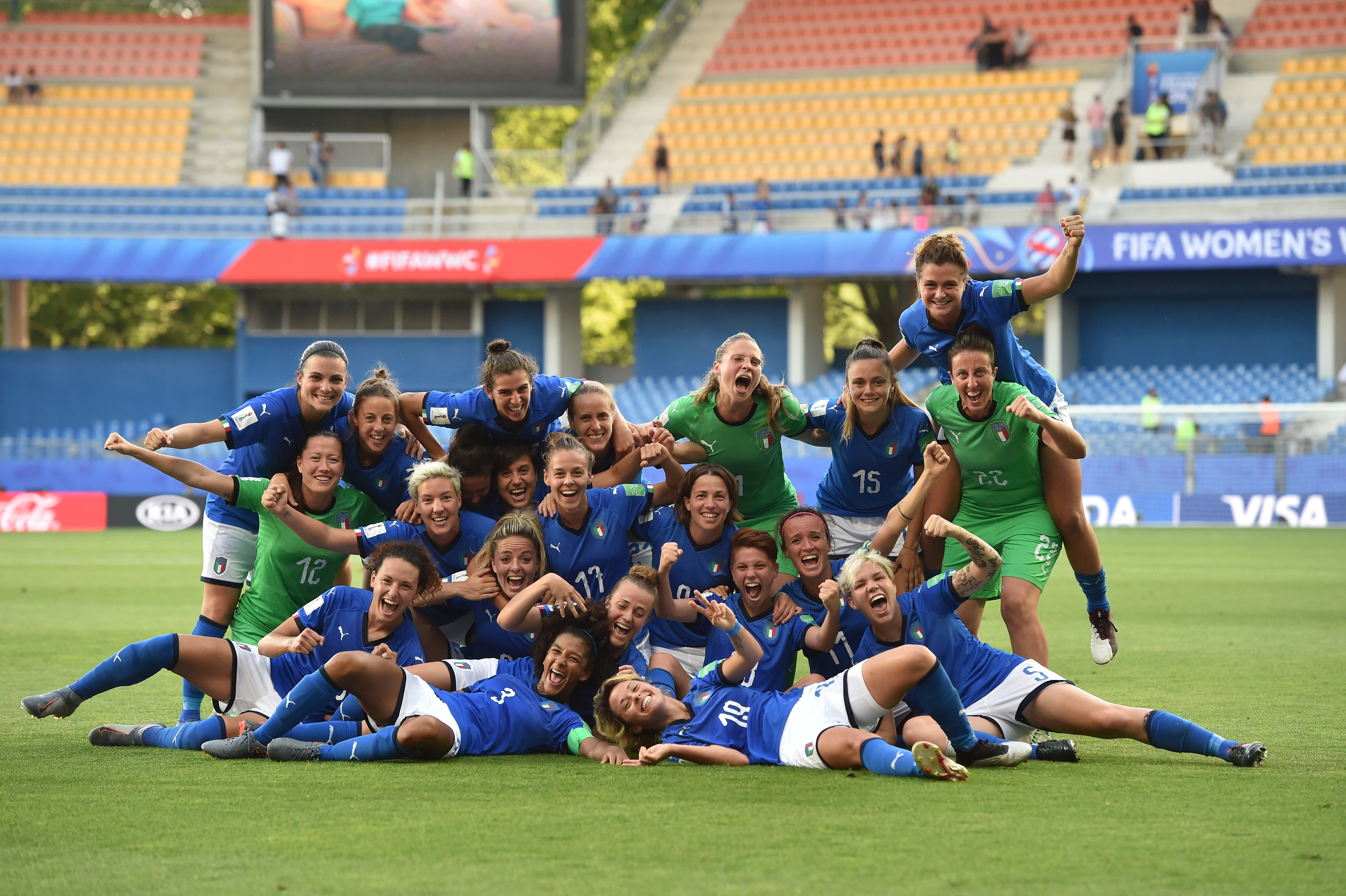
The fairy tale of ‘The World Cup Girls’: the ‘boom’ of women’s football after France 2019
From television audiences to the explosion on social media, the FIGC Study Centre looks at the legacy left behind by the Women’s World CupThursday, September 12, 2019

They made an entire country fall in love, raising interest in women's football with an irresistible mixture of goals and smiles. They celebrated every victory by dancing to the 'Macarena', a song which brings back memories of a summer which the whole country will look back on fondly. The Azzurre, the Women's National Team, or even the ‘#RagazzeMondiali’ (#WorldCupGirls), which was the hashtag used by the FIGC during the World Cup in France.
A thrilling run that saw Milena Bertolini's Italy reach the quarter-finals, a modern fairy tale for which the final chapters are still to be written. Who knows, it could be the young girls around the country who followed this World Cup on television who write the next pages, girls who have now found a passion for football and see players like Sara Gama or Barbara Bonansea as their role models. In any case, an increase in the number of applications for women's football schools is to be expected after France 2019.

In a document prepared by the FIGC Study Centre, the impact of the World Cup on the Italian women’s football movement is a marked one. 21 million people followed the Women's National Team during the World Cup (almost 90,000 fans watched Italy’s matches live), a figure higher than that for the European Under-21s (20.6 million) and close to the entire Women's World Cup (24.9 million) and the Men's Serie A (30.2 million). After the World Cup 34.1% of Italians said that they were interested in women's football, a figure that is rapidly catching up to the 45.3% of Italians who follow football.

This boom is also partially down to the media, who have been ground-breaking in bringing women's football into Italian homes. Rai and Sky undoubtedly played the two leading roles in broadcasting the World Cup, reaching a total of 24.41 million viewers (an average of 4.88 million per game) in the five matches played by Italy. The record came in Italy vs. Brazil, the third match in the group and the first match in the history of the Women's National Team to be broadcast on Rai 1, as 7.32 million viewers watched live - the highest ever figure in our country for a women's football match. This total exceeded viewing numbers for all other major football matches broadcast in Italy in the period June-July 2019, including the finals of the Women's World Cup and the UEFA Nations League, as well as the European Under-21 Championship. The valuable work done by journalists is also worth noting, with over one thousand articles on the topic published in national newspapers in the period between 1 June and 10 July.

But the real explosion was on social media thanks to FIGC’s campaign for the event as '#RagazzeMondiali' trended with over 150,000 mentions, more than the hashtag dedicated to the winning national team (#USWNT - 138 thousand) and the motto of the FIFA World Cup (#DareToShine - 130 thousand). In terms of social interaction during live broadcasting, the Women's World Cup ranked second out of all the sporting events in Italy, and the National Women's Team’s social profile ranked third in terms of overall engagement among Italian team sports. During the World Cup the FIGC attracted more new followers than any other team participating, with a total of 191,982 new followers across Instagram (104,082), Facebook (70,000) and Twitter (18,900). The players also increased their follower counts during the tournament (Bonansea and Rosucci especially), while the 100 videos uploaded by the FIGC on YouTube reached a total of over three million views. In addition to the best result in Italy’s history at a Women's World Cup (they also reached the quarter-final in 1991) and climbing to 14th place in FIFA’s rankings, France 2019 left a precious legacy, more than just statistics and 'likes', and a legacy which the FIGC will certainly seek to build on in the near future.



